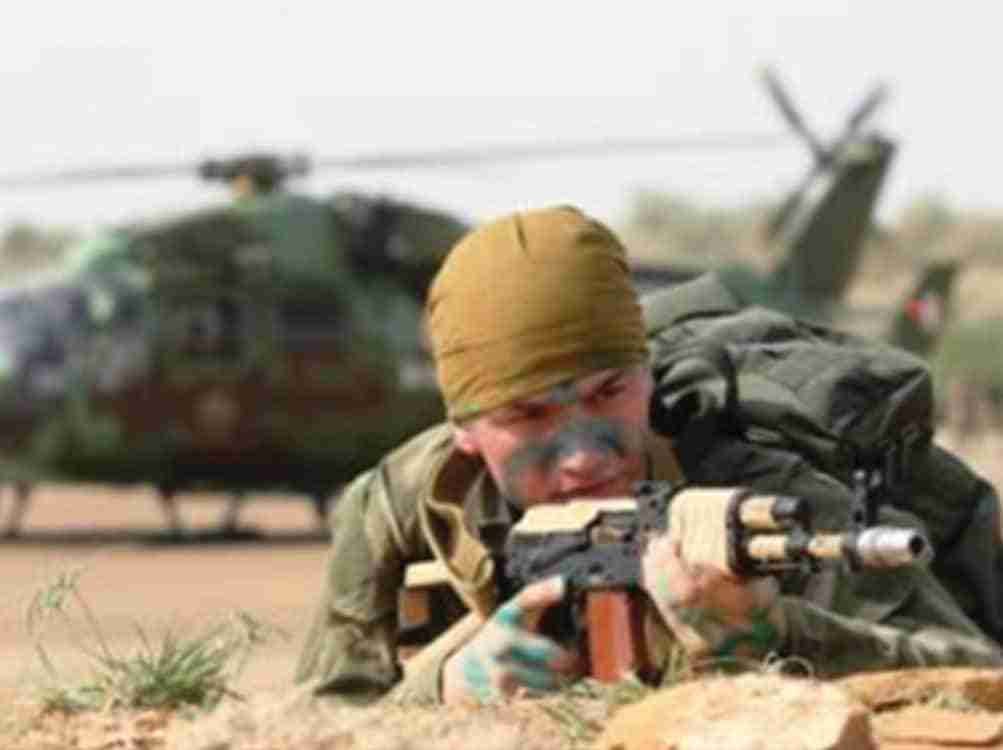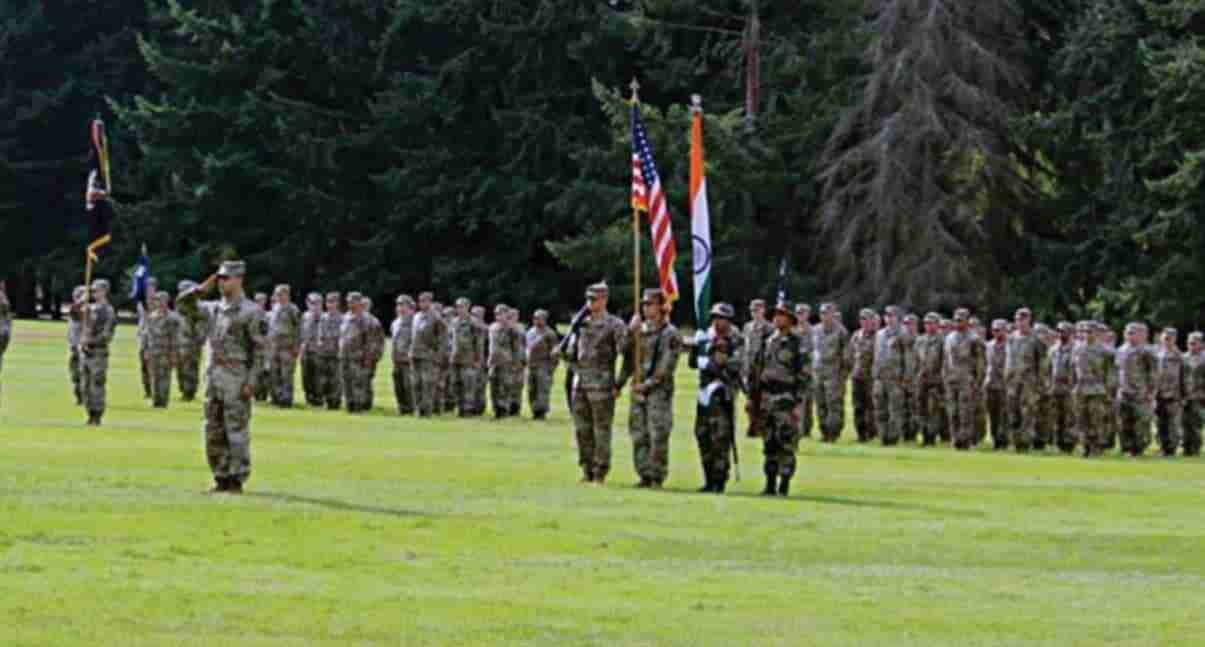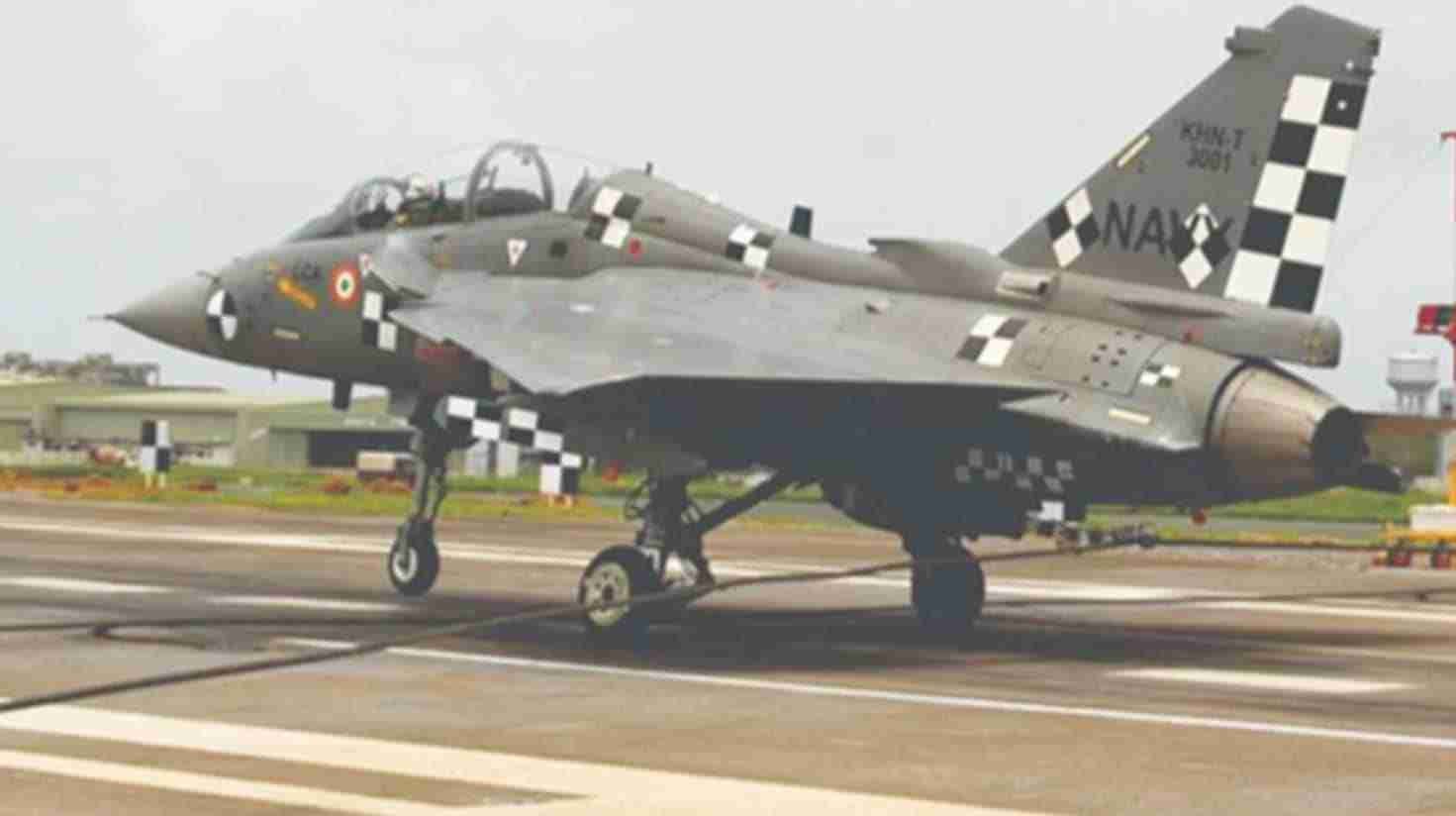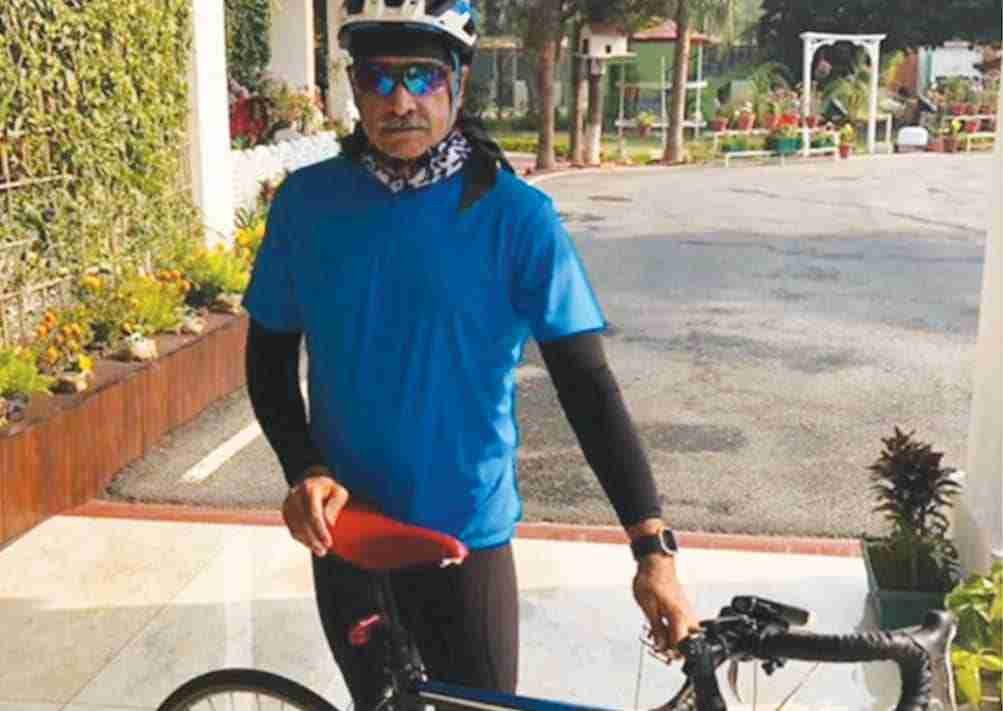INDIAN ARMY WINS INTERNATIONAL ARMY SCOUT MASTERS COMPETITION 2019
The Indian Army team comprehensively won the 5th International Army Scout Masters Competition held at Jaisalmer Military Station from 6 to 14 August 2019. A total of eight teams participated in the competition. Besides India, the other seven teams were from Armenia, Belarus, China, Kazakhstan, Russia, Sudan and Uzbekistan. International Army Games is a military sports event organised by Russia’s Ministry of Defense. Begun since August 2015, it involves participation of the armies of about 32 countries which go through a number of competitions over two weeks to prove their mettle. Earlier this year, it was proposed that the International Army Games will be held in 32 disciplines in 10 countries including Russia, India, China, Azerbaijan, Armenia, Belarus, Iran, Mongolia, Uzbekistan and Kazakhstan.This was the first time that the Indian Army participated in this competition.
The Fifth Army International Games event, the Scout Masters Competition, was held in India for the first time, in 2019. The area selected was the dunes near Jaisalmer, nestled in the Great Indian Thar Desert and the competition, scheduled from 24 July to 17 August 2019 was organised by the Konark Corps, headquartered at Jaisalmer Military Station. The competition itself, from 06 August to 14 August 2019, featured operations by Reconnaissance Teams of the armies of the eight countries mentioned. Selected by Southern Command, the Indian Army team trained hard for the last ten months in extreme weather and terrain conditions of the Thar Desert.
Directorate General Mechanised Forces was entrusted with responsibility of managing construction of the entire infrastructure and conduct of this prestigious Competition including complete administrative and technical support to all foreign teams. Director General Mechanised Forces, R. K. Jagga, AVSM, VSM, interacting with this writer said:“Since, there existed no previous precedence of conducting an international competition of this magnitude, extraordinary efforts to conceptualise and thereafter execute the conduct of the event had to be put in by all. It involved coordinating with multitude of international, government and inter-services agencies thereby ensuring a grand and successful conduct”. Through efforts of the Army HQ, Jaisalmer Air Base was notified by the MHA as an immigration and customs port for the duration of the event. This was a special and rare case as participating foreign teams inducted with their weapons and equipment in their own military air crafts. This required special security arrangements on ground and air as during that time Pakistan airspace was closed for over-flights. By making Jaisalmer as the port of entry, smooth induction and de-induction of all international teams was ensured at the venue itself which otherwise would have had to be undertaken from pre-notified immigration points like Jaipur or Chandigarh which would have led to enormous administrative and logistic challenges for the organisers and the participants.
The role of army scouts in war includes (a) to operate as lead elements and give early warning about the enemy, (b) to track and report movement behind enemy lines, (c) to assist in disruption of enemy’s mechanised movement by using anti-armour weapons, (d) laying ambushes deep inside enemy territory and (e) direct employment of various weapon systems. Their specialised skills enable them to assist with observation and listening posts, perform and help with navigation and help securing launch pads. They are trained to carry out silent battle reconnaissance after establishing contact and reconnaissance of crossing places over obstacles. Scouts are professionally trained to find out the strength and dispositions of the enemy, gaps in enemy defences and enemy’s likely reactions. They are also referred to as “Eyes and Ears” of the Army.
The world class infrastructure created at Jaisalmer Military Station to conduct this prestigious event included a challenging obstacle course for the infantry combat vehicles spread over a distance of 6.7 kms with 15 obstacles and another tough obstacle course for the Scout Masters teams with 22 obstacles laid over a distance of 1.3 km. The smooth and efficient conduct of the event drew appreciation from all the participating teams and international panel of judges including the co-host, Russia. The Russian delegation and senior military and diplomatic dignitaries from participating countries who visited Jaisalmer Military Station on 14 and 15 May 2019, were shown and briefed on the special training facilities created at Jaisalmer and Pokhran. The visiting teams were impressed with the overall arrangements and complimented the Indian organisers for creating an excellent infrastructure for the competition.
The Competition was conducted in five stages, which tested the overall skills of mechanised infantry scouts in simulated battlefield scenarios. The first stage on 06-07 August was infiltration and ambush in Khuri sand dunes, 50 kms from Jaisalmer. The second stage was the Scout Specialist BMP Obstacle Course, on 08-09 August, at Jaisalmer.
The third stage was the Scouts Trail Obstacle Course, on 10-11 August, also at Jaisalmer. This stage encompassed the testing of reconnaissance squad in full combat load with weapons and simulation means to negotiate 22 obstacles designed on the battle concept of tactical move in a semi urban target area. The Scouts Trail, spread over 1.3 km, was built on the design of Russian Scout Training Course and posed a formidable challenge to all teams in the sun and sand environment of Jaisalmer Military Station. The Scout teams were to complete the obstacle course through different scenarios of sudden encounter with the enemy in minimum time and with least penalties. The stage was conducted in two contiguous segments to include the one mile run and the obstacle course. The reconnaissance squad negotiated the obstacle course according to the designed sequenced tactical drills, which involved stealthily approaching the target area, executing specific tasks such as controlled demolition, recovery of crypto material and thereafter exfiltration. In this exacting stage, Indian Army came first, with the teams of Russia, China, Uzbekistan, Belarus, Kazakhstan, Sudan and Armenia standing from second to eighth respectively.
The fourth stage, Small Arms Firing, on 12-13 August, was at the Pokharan Field Firing Range, 110 kms from Jaisalmer. The fifth stage, Exfiltration and Flotation, on 14 August, was at Rohrund Pondage, 90 kms from Jaisalmer. The combat skills were be adjudicated by an international panel of judges and referees. For the foreign participants, most of whom are accustomed to moderate to cold climate, exposure to the terrain and climatic conditions of the sand dunes of the Thar desert in months like May till August, in high and dry heat, was an unforgettable experience, to say the least.

India’s Defence Minister, Mr. Rajnath Singh was the Chief Guest at the closing ceremony in Jaisalmer Military Station on 16 August 2019, which was attended by General Bipin Rawat, Chief of the Army Staff, Lieutenant General SK Saini, General Officer Commanding in Chief Southern Command, officials from participating nations and members of the International Organising Committee of the International Army Games event.
It is interesting to note that Mr. Wang Quan-dwa, writing in China’s Defense Newspaper, an official newspaper of the People’s Liberation Army News Media Center, on April 8, 2019 (edited and translated into English by China Military Online), stated that “Indian Special Operations Force are flashy but useless “white-elephant armed forces”…India’s Army, Navy and Air Force, as well as its internal affairs departments, all of them have their respective special forces, totalling tens of thousands of active personnel. However, due to the deficiency of the authorities and the lack of combat tactical training, as well as the power decentralisation, equipment shortage and weak ability in information acquisition, the Indian Special Forces are widely considered as “white-elephant armed forces,” that is, a troop “of enormous size, but flashy and useless.” The report, a classic piece of propaganda with fabrications also stated: “the performance of the Indian Special Forces in the India-Pakistan conflict occurred in February 2019 has further confirmed the above assertion…” Mr. Quan-dwa is obviously not aware that the experience of the PLA in some skirmishes against Indian Army at Nathula, in 1967, was such that for over half a century since then, including at Doklam, the Chinese have not pulled the trigger. India’s National Defence Academy (NDA) for tri-services training, Indian Military Academy (IMA) for Army training and other Naval and Air Force academies have been sought after destinations for training cadets by many countries. This author, who trained in the first two-NDA and IMA-recalls that many of the foreign cadets who attended the courses acknowledged that the standards of physical fitness and mental/psychological endurance at these academies were very high.
A hundred years after World War I, from 2014-till 2018, then Allied nations yet again recalled the endurance, discipline and sheer bravery of Indian soldiers. Thanks to Pakistan, whose fourth war against India, with export of terrorism, continues till date, the fighting capabilities of Indian soldiers have been further honed since both the World Wars.
EXERCISE YUDH ABHYAS 2019
As part of the ongoing Indo-US defence cooperation, a joint military training exercise,‘Yudh Abhyas 2019,’wascarried out at Joint Base Lewis-McChord in Washington, USA, from September 5 to September 18. This was the 15th iteration of the bilateral exercise, which is hosted every year, alternately between the two countries. In 2018, the exercise was held in India at the Chaubattia military station, Almora, Uttarakhand.
The exercise provides an opportunity to the armed forces of both the countries to train in an integrated manner at battalion level with joint planning at the brigade level. What started as an exercise featuring just a platoon strength from each country training jointly and carrying out basic battle drills, has over the years grown in stature. Yudh Abhyas 2019 saw over 700 soldiers participating in the exercise, during the course of which, multiple scenarios were rehearsed, culminating in a joint exercise.
Such exercises help in developing an understanding of each others organisational structures, battle drills and procedures, command and control set up, communication systems etc. This helps in overall understanding of how each army conducts operations, which in turn facilitates inter-operability between the armed forces of both countries to meet any unforeseen contingency across the globe.
As per Maj. Gen. Xavier T. Brunson, GOC of US Army’s 7 Infantry Division, “Both of our armies have gained a wealth of knowledge on how to fight in complex terrain all over the world. We have many lessons to share with each other. Coming together today gives us the opportunity.” This in a sense signifies the growing defence cooperation between the two countries. The U.S. Department of Defense’s recently released Indo-Pacific Strategy Report also emphasised a central role for India in U.S. Asia strategy, stating “DoD and the Indian Ministry of Defence are increasing the scope, complexity, and frequency of military exercises”.

Naval Variant of Tejas
The naval variant of the Light Combat Aircraft (LCA) Tejas made a successful short landing with arrestor wires on the Shore Based Test Facility (SBTF) at the naval base INS Hansa in Goaon 13 September. The DRDO temped the successful test as a major milestone, with an official stating, “This is the first time an indigenous fighter has made arrested landing in India. It’s a golden letter day that puts India on the world map as a nation with the capability to design a deck landing aircraft”. The successful test has displayed the professional prowess of India’s scientific community, the Aeronautical Development Agency (ADA) embedded with design plus build capability of Hindustan Aeronautics, DRDO and CSIR Labs. Only a few countries like the US, Russia, France and China have developed fighters capable of arrested landing on aircraft carrier decks.

With the success of this test, the navy is now one step closer to the final induction of the naval variant of the Tejas. This is a major forward move for the delayed project as it tests modifications that will allow the naval variant of the Tejas to eventually operate from an aircraft carrier. The SBTF, is a replica of the flight deck of an aircraft carrier and is used to train naval pilots before they actually land on the deck of an aircraft carrier. It remains a very complex manoeuvre, due to the short flight deck of an aircraft carrier.
Lt Gen Alok Kler takes over South Western Command
In what must certainly be a first, Lt Gen Alok Kler chose to cycle from New Delhi to Jaipur, to assume command of the prestigious South Western Command. A cycling enthusiast, the General had also gone by cycle when he assumed command of a Corps. A third-generation cavalry officer, Gen Kler was commissioned into 68 Armoured Regiment in 1982. He was accompanied on this trip by his sons, Atman and Aarman, both in their twenties and completed the 270 km trip in under 14 hours. “Cycling is a terrific workout” said the General, “and I am passionate about it. I believe fitness should be a personal mission and not imposed by the organisation. It sends a message of fitness to the men under my command and others too”. Certainly an act of motivation to all ranks in his command.

ISHRAT AKHTER: A STORY OF HOPE
The Asia-Oceania Wheelchair Basketball Championship to be played in November-December 2019 in Thailand. The tournament is a qualifier tournament for the 2020 Tokyo Paralympics. Readying itself for the competition, the Wheelchair Basketball Federation of India (WBFI) found it could not get in touch with Ishrat Akhter—a 24-year old who had made the cut. She was in Kashmir and as both mobile phone services and the internet had been cut off, the organisers could not get in touch with her to inform her that she had to attend a national camp in Chennai which was beginning on 27 August. It appeared that Ishrat, who had injured her spinal cord in an accident in 2016, would lose her chance to represent the country.
This was when Louis George, a former naval officer and coach of the Indian women’s wheelchair basketball team, when speaking to his friend Colonel Isenhower, a retired army officer made a mention of his inability to get in touch with Ishrat. There were just two days left for the camp and George did not have Ishrat’s address. But Isenhower was enterprising. He asked for her photo and through his sources, got in touch with the J&K police in Srinagar and informed the Indian Army. And from that moment, the Indian Army took over and what was then witnessed was the unfolding of a little miracle. The Army traced her out from the limited inputs they had, to a village called Bangdara in Baramulla. And then an Army team went to the village and traced her house.

“Does Ishrat live her” asked the stocky army man when Ishrat’s father opened the door, and showed him the photograph of the girl.
“Yes”, was all that Abdul Rashid Mir could utter, fear writ large on his face.
“Well,” said the beaming army man, “congratulations. Your daughter has been selected for the national championship and she has to go Chennai immediately”.
And then celebrations broke out in the house.
On 27th morning, the Army escorted Ishrat to the airport and the whole village lined up to give her a resounding send- off. From there to New Delhi and thence to Chennai, just in time to make it the national camp. “The Army helped me a lot,” said Ishrat. “ I was scared because it was the first time I was travelling alone, but I am not scared any more”. Compassion and the joint efforts of a large number of people had created a small miracle and given hope to a young girl to live her dream. The Indian Army proved once again why it is known as the most humane military force in the world.


